-
Posts
733 -
Joined
-
Last visited
-
Days Won
18
Reputation Activity
-
 Falstaft got a reaction from Will in Fugues!
Falstaft got a reaction from Will in Fugues!
I've been summoned!
Exact definitions differ between theorists of course, but there is a pretty stable consensus concerning what's genuinely fugal, what's canonical or imitative, and what's just polyphonically busy. For a fugue, it's all about that incremental feeling. One voice introduces the fugue's main idea ("subject") in full, then another comes in repeating it while the first offers a countermelody ("answer"), and so on. Traditionally, these need to be at quite specific tonal levels -- the second either in ("real") or on ("tonal") the key of the dominant. And back and forth it goes until all seperate contrapuntal strands are introduced, usually 3-4 voices in total. I'm simplifying a lot, though it's worth pointing out that Williams almost never writes fugues by completely by the "book." The key thing is that feeling of accretion, of rising intricacy, of one melodic subject chasing another,
As breathtaking as it is, I'm afraid there's nothing fugal in the Asteroid Field. March of the Resistance's middle section includes definite but quite unconventional fugal exposition that modulates up by fifth three times, from F to D, and doesn't have a consistent countersubject.
A few years ago I gave a talk on all things neo-Baroque in Williams, which included transcribing all of his fugues, fugatos, and canonic passages. It's a marvelous thing to behold. In any case, my vote is for Black Sunday.
-
 Falstaft got a reaction from ChrisAfonso in Fugues!
Falstaft got a reaction from ChrisAfonso in Fugues!
I've been summoned!
Exact definitions differ between theorists of course, but there is a pretty stable consensus concerning what's genuinely fugal, what's canonical or imitative, and what's just polyphonically busy. For a fugue, it's all about that incremental feeling. One voice introduces the fugue's main idea ("subject") in full, then another comes in repeating it while the first offers a countermelody ("answer"), and so on. Traditionally, these need to be at quite specific tonal levels -- the second either in ("real") or on ("tonal") the key of the dominant. And back and forth it goes until all seperate contrapuntal strands are introduced, usually 3-4 voices in total. I'm simplifying a lot, though it's worth pointing out that Williams almost never writes fugues by completely by the "book." The key thing is that feeling of accretion, of rising intricacy, of one melodic subject chasing another,
As breathtaking as it is, I'm afraid there's nothing fugal in the Asteroid Field. March of the Resistance's middle section includes definite but quite unconventional fugal exposition that modulates up by fifth three times, from F to D, and doesn't have a consistent countersubject.
A few years ago I gave a talk on all things neo-Baroque in Williams, which included transcribing all of his fugues, fugatos, and canonic passages. It's a marvelous thing to behold. In any case, my vote is for Black Sunday.
-
 Falstaft reacted to GerateWohl in Fugues!
Falstaft reacted to GerateWohl in Fugues!
This is more or less just a canon form, that Williams uses quite often as some kind of echo of the first voice in the second voice, not a fugue.
Like here:
-
 Falstaft reacted to igger6 in Fugues!
Falstaft reacted to igger6 in Fugues!
I've been wondering about the minimum requirements for a true fugue since March of the Resistance was released. Let's see if this works like in the commercials:
Like a good neighbor, @Falstaft is there!
Maybe he'll appear out of thin air and explain fugues to us!
-
 Falstaft reacted to Schilkeman in Fugues!
Falstaft reacted to Schilkeman in Fugues!
No, there's definitely a mini fugue at 0:44, but much like Setting the Trap, it's so short it's arguable that it's a "real" fugue.
-
 Falstaft reacted to Schilkeman in Fugues!
Falstaft reacted to Schilkeman in Fugues!
I don't hear anything fugal in Asteroid chase. There's lots of counterpoint, but it's not a fugue.
-
 Falstaft reacted to The Lost Folio in The John Williams Piano Collection
Falstaft reacted to The Lost Folio in The John Williams Piano Collection
It's very close to the piano performance in the movie (but not exactly), and then continues for slightly longer to properly end the second phrase. (There's a convenient repeat so you play the whole thing twice.) Simple, but that's the sort of intimate, domestic character I associate with this score and that I think a piano arrangement should strive for.
I guess not -- but it does sound different to me, especially the second page, perhaps because the arrangement brings out some chord tones that are more faint in the original score and that I had never really heard (or paid attention to) before? (Actually, probably because the "Reunion" track has a lot of material not in the orchestral suite, which I've listened to so many more times!) Not quite sure. Your ears are fine, don't worry!
I do have everything that's on my website!
-
 Falstaft reacted to The Lost Folio in The John Williams Piano Collection
Falstaft reacted to The Lost Folio in The John Williams Piano Collection
Yes, it's a nice arrangement. But I think there's a sort of archaic simplicity to this score that is lacking from this arrangement. I think its countermelodies tend to be too busy, and sometimes use chords that sound foreign to the harmonic language of Jane Eyre. Still, I'd be happy to hear this in concert!
-
 Falstaft got a reaction from ConorPower in The John Williams Piano Collection
Falstaft got a reaction from ConorPower in The John Williams Piano Collection
Found this on YouTube -- quite a good arrangement:
-
 Falstaft got a reaction from ConorPower in The John Williams Piano Collection
Falstaft got a reaction from ConorPower in The John Williams Piano Collection
@ConorPower, don't tempt me, I've got enough on my plate right now!
-
 Falstaft reacted to GerateWohl in The John Williams Piano Collection
Falstaft reacted to GerateWohl in The John Williams Piano Collection
Was these days trying to remember where I once used to hear a similarity between Jane Eyre and Hook. Probably it is this piece and "You are the Pan".
This arrangement is really beautiful.
-
 Falstaft got a reaction from The Lost Folio in The John Williams Piano Collection
Falstaft got a reaction from The Lost Folio in The John Williams Piano Collection
Found this on YouTube -- quite a good arrangement:
-
 Falstaft got a reaction from GerateWohl in The John Williams Piano Collection
Falstaft got a reaction from GerateWohl in The John Williams Piano Collection
Found this on YouTube -- quite a good arrangement:
-
 Falstaft got a reaction from Molly Weasley in The Rise of Skywalker - COMPLETE SCORE Discussion - SPOILERS ALLOWED!
Falstaft got a reaction from Molly Weasley in The Rise of Skywalker - COMPLETE SCORE Discussion - SPOILERS ALLOWED!
What a treat. Only strengthens my opinion that TROS is the best musical entry in the sequel Trilogy. Not just the thematic variants (though those are great too). It's all about the transitions!:
*The way the Force theme in Dm is flanked, first by that beautiful dissonant texture that seems to coalesce on a E♭-maj pandiatonic cluster, then a post half-cadential sustain on the ♭II(ma7) chord (also E♭). Both bookending sections have a nice rising line [G3-C4-D4-G4 before, G3-A3-D4-Eb4 after]. Kind of Mountain Motif from CE3K-esque.
*The little idea starting at 0:28 in B-major. That quick progression, B to Bdim7 back to B, is a crucial harmonic ingredient in the Friendship Theme that comes a few minutes later.
*The interstitial material after Rey's theme gives us, for the first time I think in a long while in Star Wars, that wonderful Waltonian harmonic sensibility. Chords are Bma7/A♯ <=> D♭/G♭ => E♭ma7/B♭ => D♭ma7/B♭ => C/G. There are a few other patches where Williams re-channels Walton in TROS and it's just so satisfying to hear that sound return.
-
 Falstaft got a reaction from Andy in The Rise of Skywalker - COMPLETE SCORE Discussion - SPOILERS ALLOWED!
Falstaft got a reaction from Andy in The Rise of Skywalker - COMPLETE SCORE Discussion - SPOILERS ALLOWED!
What a treat. Only strengthens my opinion that TROS is the best musical entry in the sequel Trilogy. Not just the thematic variants (though those are great too). It's all about the transitions!:
*The way the Force theme in Dm is flanked, first by that beautiful dissonant texture that seems to coalesce on a E♭-maj pandiatonic cluster, then a post half-cadential sustain on the ♭II(ma7) chord (also E♭). Both bookending sections have a nice rising line [G3-C4-D4-G4 before, G3-A3-D4-Eb4 after]. Kind of Mountain Motif from CE3K-esque.
*The little idea starting at 0:28 in B-major. That quick progression, B to Bdim7 back to B, is a crucial harmonic ingredient in the Friendship Theme that comes a few minutes later.
*The interstitial material after Rey's theme gives us, for the first time I think in a long while in Star Wars, that wonderful Waltonian harmonic sensibility. Chords are Bma7/A♯ <=> D♭/G♭ => E♭ma7/B♭ => D♭ma7/B♭ => C/G. There are a few other patches where Williams re-channels Walton in TROS and it's just so satisfying to hear that sound return.
-
 Falstaft got a reaction from Gurkensalat in The Rise of Skywalker - COMPLETE SCORE Discussion - SPOILERS ALLOWED!
Falstaft got a reaction from Gurkensalat in The Rise of Skywalker - COMPLETE SCORE Discussion - SPOILERS ALLOWED!
What a treat. Only strengthens my opinion that TROS is the best musical entry in the sequel Trilogy. Not just the thematic variants (though those are great too). It's all about the transitions!:
*The way the Force theme in Dm is flanked, first by that beautiful dissonant texture that seems to coalesce on a E♭-maj pandiatonic cluster, then a post half-cadential sustain on the ♭II(ma7) chord (also E♭). Both bookending sections have a nice rising line [G3-C4-D4-G4 before, G3-A3-D4-Eb4 after]. Kind of Mountain Motif from CE3K-esque.
*The little idea starting at 0:28 in B-major. That quick progression, B to Bdim7 back to B, is a crucial harmonic ingredient in the Friendship Theme that comes a few minutes later.
*The interstitial material after Rey's theme gives us, for the first time I think in a long while in Star Wars, that wonderful Waltonian harmonic sensibility. Chords are Bma7/A♯ <=> D♭/G♭ => E♭ma7/B♭ => D♭ma7/B♭ => C/G. There are a few other patches where Williams re-channels Walton in TROS and it's just so satisfying to hear that sound return.
-
 Falstaft reacted to Tydirium in John Williams' concerti on Naxos
Falstaft reacted to Tydirium in John Williams' concerti on Naxos
Just noticed that the Hunter Eberly recording of the Trumpet Concerto is finally available, FYI:
EDIT: Here is the press release from DSO:
https://www.dso.org/watch-listen-and-connect/newsroom-2/new-dso-recording-john-williamss-trumpet-concerto-with-principal-trumpet-hunter-eberly-on-naxos-label
-

-
 Falstaft reacted to artguy360 in The Rise of Skywalker - COMPLETE SCORE Discussion - SPOILERS ALLOWED!
Falstaft reacted to artguy360 in The Rise of Skywalker - COMPLETE SCORE Discussion - SPOILERS ALLOWED!
TROS soundtrack album is missing music like this that flows and tells a story. I think including more of these musical moments and stuff like all the redeemed Ben renditions would dramatically improve the album.
-
 Falstaft reacted to Pat_S in [GAME] Sheet music extract : find the score
Falstaft reacted to Pat_S in [GAME] Sheet music extract : find the score
I'm stuck! I initially thought it might be from the opening of The Last Jedi, around 4:21, but obviously it can't be that if it's earlier than Azkaban, and it also doesn't sound quite the same. The passage shared seems incredibly Williams-y though! Back to the drawing board.
-
 Falstaft got a reaction from crumbs in The Rise of Skywalker - COMPLETE SCORE Discussion - SPOILERS ALLOWED!
Falstaft got a reaction from crumbs in The Rise of Skywalker - COMPLETE SCORE Discussion - SPOILERS ALLOWED!
What a treat. Only strengthens my opinion that TROS is the best musical entry in the sequel Trilogy. Not just the thematic variants (though those are great too). It's all about the transitions!:
*The way the Force theme in Dm is flanked, first by that beautiful dissonant texture that seems to coalesce on a E♭-maj pandiatonic cluster, then a post half-cadential sustain on the ♭II(ma7) chord (also E♭). Both bookending sections have a nice rising line [G3-C4-D4-G4 before, G3-A3-D4-Eb4 after]. Kind of Mountain Motif from CE3K-esque.
*The little idea starting at 0:28 in B-major. That quick progression, B to Bdim7 back to B, is a crucial harmonic ingredient in the Friendship Theme that comes a few minutes later.
*The interstitial material after Rey's theme gives us, for the first time I think in a long while in Star Wars, that wonderful Waltonian harmonic sensibility. Chords are Bma7/A♯ <=> D♭/G♭ => E♭ma7/B♭ => D♭ma7/B♭ => C/G. There are a few other patches where Williams re-channels Walton in TROS and it's just so satisfying to hear that sound return.
-
 Falstaft got a reaction from michael_grig in The Rise of Skywalker - COMPLETE SCORE Discussion - SPOILERS ALLOWED!
Falstaft got a reaction from michael_grig in The Rise of Skywalker - COMPLETE SCORE Discussion - SPOILERS ALLOWED!
What a treat. Only strengthens my opinion that TROS is the best musical entry in the sequel Trilogy. Not just the thematic variants (though those are great too). It's all about the transitions!:
*The way the Force theme in Dm is flanked, first by that beautiful dissonant texture that seems to coalesce on a E♭-maj pandiatonic cluster, then a post half-cadential sustain on the ♭II(ma7) chord (also E♭). Both bookending sections have a nice rising line [G3-C4-D4-G4 before, G3-A3-D4-Eb4 after]. Kind of Mountain Motif from CE3K-esque.
*The little idea starting at 0:28 in B-major. That quick progression, B to Bdim7 back to B, is a crucial harmonic ingredient in the Friendship Theme that comes a few minutes later.
*The interstitial material after Rey's theme gives us, for the first time I think in a long while in Star Wars, that wonderful Waltonian harmonic sensibility. Chords are Bma7/A♯ <=> D♭/G♭ => E♭ma7/B♭ => D♭ma7/B♭ => C/G. There are a few other patches where Williams re-channels Walton in TROS and it's just so satisfying to hear that sound return.
-
 Falstaft got a reaction from Brando in The Rise of Skywalker - COMPLETE SCORE Discussion - SPOILERS ALLOWED!
Falstaft got a reaction from Brando in The Rise of Skywalker - COMPLETE SCORE Discussion - SPOILERS ALLOWED!
What a treat. Only strengthens my opinion that TROS is the best musical entry in the sequel Trilogy. Not just the thematic variants (though those are great too). It's all about the transitions!:
*The way the Force theme in Dm is flanked, first by that beautiful dissonant texture that seems to coalesce on a E♭-maj pandiatonic cluster, then a post half-cadential sustain on the ♭II(ma7) chord (also E♭). Both bookending sections have a nice rising line [G3-C4-D4-G4 before, G3-A3-D4-Eb4 after]. Kind of Mountain Motif from CE3K-esque.
*The little idea starting at 0:28 in B-major. That quick progression, B to Bdim7 back to B, is a crucial harmonic ingredient in the Friendship Theme that comes a few minutes later.
*The interstitial material after Rey's theme gives us, for the first time I think in a long while in Star Wars, that wonderful Waltonian harmonic sensibility. Chords are Bma7/A♯ <=> D♭/G♭ => E♭ma7/B♭ => D♭ma7/B♭ => C/G. There are a few other patches where Williams re-channels Walton in TROS and it's just so satisfying to hear that sound return.
-
 Falstaft got a reaction from Chewy in The Rise of Skywalker - COMPLETE SCORE Discussion - SPOILERS ALLOWED!
Falstaft got a reaction from Chewy in The Rise of Skywalker - COMPLETE SCORE Discussion - SPOILERS ALLOWED!
What a treat. Only strengthens my opinion that TROS is the best musical entry in the sequel Trilogy. Not just the thematic variants (though those are great too). It's all about the transitions!:
*The way the Force theme in Dm is flanked, first by that beautiful dissonant texture that seems to coalesce on a E♭-maj pandiatonic cluster, then a post half-cadential sustain on the ♭II(ma7) chord (also E♭). Both bookending sections have a nice rising line [G3-C4-D4-G4 before, G3-A3-D4-Eb4 after]. Kind of Mountain Motif from CE3K-esque.
*The little idea starting at 0:28 in B-major. That quick progression, B to Bdim7 back to B, is a crucial harmonic ingredient in the Friendship Theme that comes a few minutes later.
*The interstitial material after Rey's theme gives us, for the first time I think in a long while in Star Wars, that wonderful Waltonian harmonic sensibility. Chords are Bma7/A♯ <=> D♭/G♭ => E♭ma7/B♭ => D♭ma7/B♭ => C/G. There are a few other patches where Williams re-channels Walton in TROS and it's just so satisfying to hear that sound return.
-
 Falstaft got a reaction from Cerebral Cortex in The Rise of Skywalker - COMPLETE SCORE Discussion - SPOILERS ALLOWED!
Falstaft got a reaction from Cerebral Cortex in The Rise of Skywalker - COMPLETE SCORE Discussion - SPOILERS ALLOWED!
What a treat. Only strengthens my opinion that TROS is the best musical entry in the sequel Trilogy. Not just the thematic variants (though those are great too). It's all about the transitions!:
*The way the Force theme in Dm is flanked, first by that beautiful dissonant texture that seems to coalesce on a E♭-maj pandiatonic cluster, then a post half-cadential sustain on the ♭II(ma7) chord (also E♭). Both bookending sections have a nice rising line [G3-C4-D4-G4 before, G3-A3-D4-Eb4 after]. Kind of Mountain Motif from CE3K-esque.
*The little idea starting at 0:28 in B-major. That quick progression, B to Bdim7 back to B, is a crucial harmonic ingredient in the Friendship Theme that comes a few minutes later.
*The interstitial material after Rey's theme gives us, for the first time I think in a long while in Star Wars, that wonderful Waltonian harmonic sensibility. Chords are Bma7/A♯ <=> D♭/G♭ => E♭ma7/B♭ => D♭ma7/B♭ => C/G. There are a few other patches where Williams re-channels Walton in TROS and it's just so satisfying to hear that sound return.


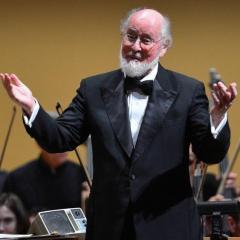
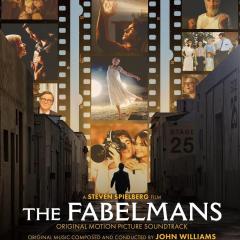


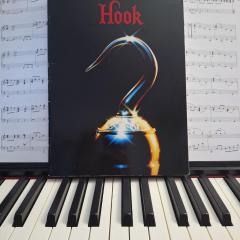

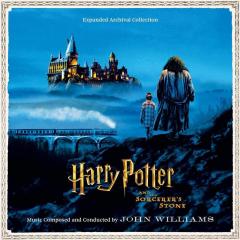
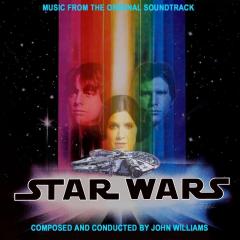


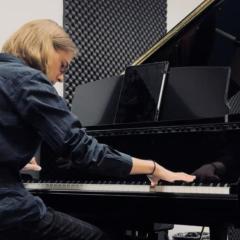
.thumb.png.99648892217b423e18fe027415380d39.png)

.thumb.gif.df2a851b259fbffe34b18fc1c796422a.gif)